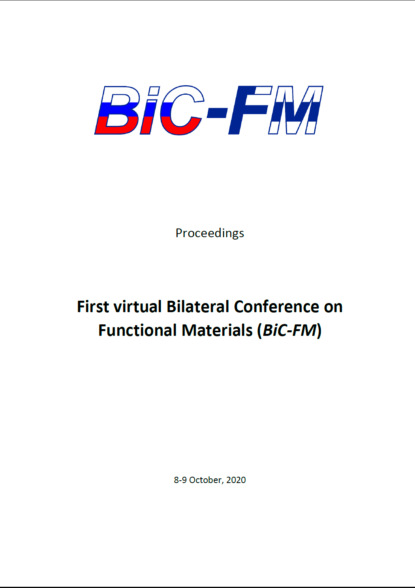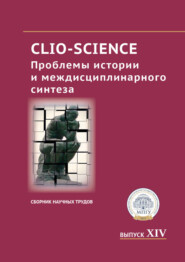По всем вопросам обращайтесь на: info@litportal.ru
(©) 2003-2024.
✖
First virtual Bilateral Conference on Functional Materials (BiC-FM)
Автор
Год написания книги
2020
Настройки чтения
Размер шрифта
Высота строк
Поля
3 – Leiden Institute of Chemistry, Leiden University, PO Box 9502, 2300 RA, Leiden, The Netherlands
cristina.flox@aalto.fi
Electrochemical CO
reduction reaction is a key technology for the mitigation of the climate change. However, CO
reduction is highly energetic and unfavourable electrochemical reaction, requiring catalyst to achieve economically appealing performance. In this scenario, Nickel-Nitrogen (Ni-N)-active sites within porous carbon are attracting increasing interest as inexpensive and efficient electrocatalyst of CO
reduction. In fact, the Ni-N- active sites anchored to the carbon structures have been proposed as excellent solution for the conversion CO
-to-CO, exceeding selectivity and partial current density values of the commercial electrocatalyst. Herein, the in-situ creation of Ni-N-active sites using Nickel Carbide nanoparticles-wrapped in a graphene shell (Ni
C@graphene NPs) and Emeraldine as precursors in combination with the thermal treatments is evaluated. As a result, the Ni-N- active sites in combination with Ni
C@graphene NPs provide a new paradigm, where the formate production is dominated leading a complete deactivation of CO route. Surprisingly, the unprecedent key performance indicators of the CO
reduction showed a Faradaic Efficiency up to 90 % at 0.55V vs. RHE at 25ºC. Additionally, the CO
-to-formate conversion showed a temperature sensitive- dependence, increasing the selectivity (up to 96 %) in the voltage range tested (0.45 to 0.7V vs. RHE), when the electrolysis was performed at 40ºC. The apparent Energy Activation values were calculated, attaining values up to 45 kJ mol
at -0.55 V vs. RHE@40ºC, which agrees well with previous reports. Therefore, the creation of Ni-N- active sites in the Ni
C@graphene NPs can effectively reduce the energy barrier towards the CO
-to formate conversion, providing new mechanism insight for the CO
reduction.
Cristina Flox received her PhD in Electrochemistry applied to flow reactors from Universitat de Barcelona in 2008, followed by postdoctoral fellowships in LEITAT and Catalonia Institute for Energy Research, Spain (2008–2017). Subsequently, she joined Aalto University in 2017, working on the design of innovative nanomaterials for energy applications. Particularly, she is focused on the development of electrodes for CO
reduction and solid-electrolytes for lithium-ion batteries. Additionally, her research interest are fundamental aspects on energy storage systems, especially redox/semi-solid flow batteries, supercapacitors and Na-ion batteries. She published more than 47 refereed articles (h index 23, 2025 citations), 3 book chapters and 1 patent application.
Development of materials for electrochemical bio-sensing
Koskinen J
., Wester N
., Etula J
., Mynttinen E
., Laurila T
.
Aalto University, School of Chemical Engineering, Espoo, Finland
Aalto University, School of Electrical Engineering, Espoo, Finland
Jari.Koskinen@aalto.fi
Bio-sensing by applying electrochemical measurements offers several benefits in development of fast and simple devices. They have been investigated for detection of neural transmitters (e.g. dopamine) and recently for detection of drug molecules in blood samples. In this presentation the development of electrode materials made of thin amorphous carbon films and single wall carbon nanotube networks are reported. Layered structures prototype thin film sensors applying perm selective nafion top coatings are also demonstrated. Sensitivity and selectivity for bio-molecules detection in physiologically relevant concentrations has been demonstrated for analytes such as opioids and other analgesics together with most relevant interfering molecules.
Acknowledgement.This work was supported by Business Finland (FEDOC 211637 and FEPOD 2117731 projects), Aalto CHEM Doctoral School and Orion Research Foundation Sr for funding. The authors acknowledge the provision of facilities by Aalto University OtaNano−Micronova Nanofabrication Center and Aalto University Raw materials Infrastructure.
Prof. Jari Koskinen is professor of Materials Science at Aalto University, School Chemical Engineering. He has an experience of over 35 years in the field of surface engineering and in particular on development of carbon nanomaterials and coatings. He has over 180 international publications of the topic. He is leading a research group: “Physical properties surfaces and interfaces”. The main impact of his research in material science are in the field of tribology and currently in electrochemical bio-sensing. Currently he is head of the Department of Chemistry and Materials Science. His H-index is 28.
Defects in olivine-type cathode materials for Li-ion batteries
Trussov I. A.
, Nazarov E. E.
, Aksyonov D. A.
, Fedotov S. S.
1 – Skolkovo Institute of Science and Technology, Moscow, Russia
s.fedotov@skoltech.ru
LiFePO
is a commercialized cathode material ensuring wide applications of Li-ion battery technology for stationary energy storage and renewable energy sources. Regardless of the obvious simplicity of its crystal structure and chemical composition, LiFePO
holds astonishing defects chemistry arising from the rearrangement of cations and vacancies within tetrahedral and octahedral sites, variations in their occupancies and iron oxidation state. It was demonstrated that so-called “Li-rich” phases might form with the Li excess being located at the Fe sites reaching up to 10 %. At the same time the polyanion sublattice was rarely considered defective. It was taken for granted that the PO
group is highly durable, with no defects being possible at the P site.
In this talk, we will concentrate upon various old and new defect peculiarities in LiFePO
and its Li-rich counterpart studied by combined X-ray and neutron diffraction methods coupled with high-throughput DFT and MD calculations. The recently discovered cations arrangements and off-stoichiometry in LiFePO
due to a partial replacement of Fe with Li atoms or PO
with hydroxyl groups for hydrothermally prepared samples at different synthesis conditions will be discussed. Such off-stoichiometries can reach over 10 % yielding Li
Fe
PO
(x ≤ 0.1) and Li
Fe
PO












